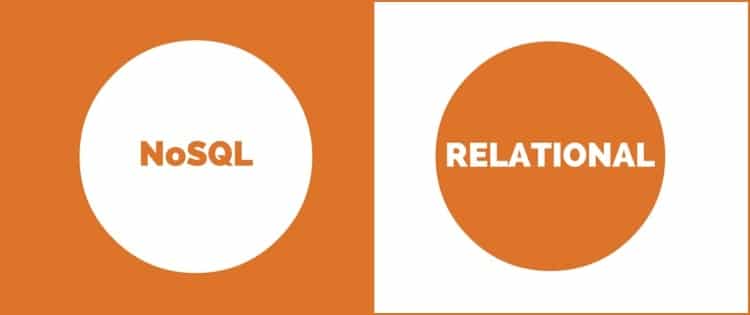When to Consider a NoSQL vs Relational Database

Table of Contents

Relational databases have been a staple of modern computing since their conception in 1970. Oracle, MySQL, SQL Server and SQLite are just a few of the examples of the kind of databases that have dominated the industry for decades.
With the rise of Web 2.0 and Big Data, however, the quantity, scale and rapidly changing nature of data being stored has shown weaknesses in traditional databases. Well-suited for the tasks they were originally designed for, relational databases have struggled to deal with the realities of modern computing and its high volume of data.
As a result, NoSQL (Not Only SQL) databases have increasingly supplanted relational database in many modern applications. NoSQL database design emphasizes non-relational data storage. In other words, rather than storing data in a rigidly structured table design, NoSQL uses any number of methods—or in some cases a combination of methods—to store data in a way that is decentralized, compared to relational databases.
{BANNER}
If your organization is in the process of deploying a new database solution, when should you consider NoSQL over traditional RDMS (relational database management system)? Let’s look at several scenarios where a NoSQL database may be a better option.
Flexible Data Requirements
One of NoSQL’s greatest strengths is its ability to handle flexible data storage. Traditional RDMS relies on static data structure—in fact, best practices stipulate the establishment of a database schema before any coding even begins. The reason is obvious: changing the database structure later is often a time-consuming and expensive affair.
In contrast, NoSQL’s ability to handle an ever-changing data model make it ideal for molecular modeling, engineering parts, geo-spatial data and similar applications, all of which revolve around data that is constantly changing and evolving.
Similarly, NoSQL is the obvious choice for scenarios where the data’s structure may be more static, but not fully known at the outset of the project.
Rapid Data Growth and Scalability
Another area where NoSQL shines is its ability to handle volatile data growth. Scenarios involving the launch of a new app or service, where a company’s customer base can suddenly skyrocket into the millions, are perfect examples of the need for NoSQL.
A traditional RDMS is designed to scale vertically. This means that when a database begins to experience performance issues, the common solution is to migrate it to a larger hard drive or faster server. In the modern era of Big Data, however, the rapid growth of the database often exceeds the speed at which such a painstaking migration process can occur.
Because of NoSQL’s decentralized nature, however, a NoSQL database is far more adept at scaling horizontally, distributed across multiple hosts rather than a single monolithic server. In addition, because NoSQL databases are designed to be distributed, it lowers the performance load—and therefore the performance requirements—of the individual pieces of hardware that are used.
The decentralized nature of NoSQL also makes it a far better option for organizations who need or want to migrate their database to the cloud.
These factors make it much faster, and often much cheaper, to scale out a NoSQL database to keep up with rapid growth.
Concurrent Performance
A third, closely related, scenario where a NoSQL database may offer significant advantages is when serving a high volume of concurrent users.
Many traditional databases use a locking mechanism to ensure data integrity. Before beginning a transaction, the RDMS marks the data so that no other process can modify it until the transaction either succeeds or fails. Unfortunately, though, in a large database serving tens of thousands of users, such a mechanism quickly impacts the performance of the database.
NoSQL, in contrast, makes a trade-off between consistency and performance, eschewing the use of locked transactions. This makes it a much better choice for situations where a large number of users need simultaneous access.
Which Type of Database Should You Choose?
As with many questions of this nature, there is no absolute answer. The choice of database architecture depends entirely on its use and application.
For organizations that need to store predictable, structured data with a finite number of individuals or applications accessing it, a relational database is still the best option. It offers a level of maturity and widespread support that remains unrivaled by current NoSQL alternatives, or any other alternatives for that matter.
Organizations whose needs are more dynamic, on the other hand, would do well to consider a NoSQL solution. This would include cases where the number of users accessing a database, perhaps through a mobile app, rapidly and dynamically fluctuates. It would also include organizations who need to store and access data across multiple servers, either locally or in the cloud. It could also include companies whose database use sees sudden and explosive growth.
In any of these cases, NoSQL’s decentralized nature, both in the way the database is structured as well as the hardware used to store it, make it a much better option than traditional.




